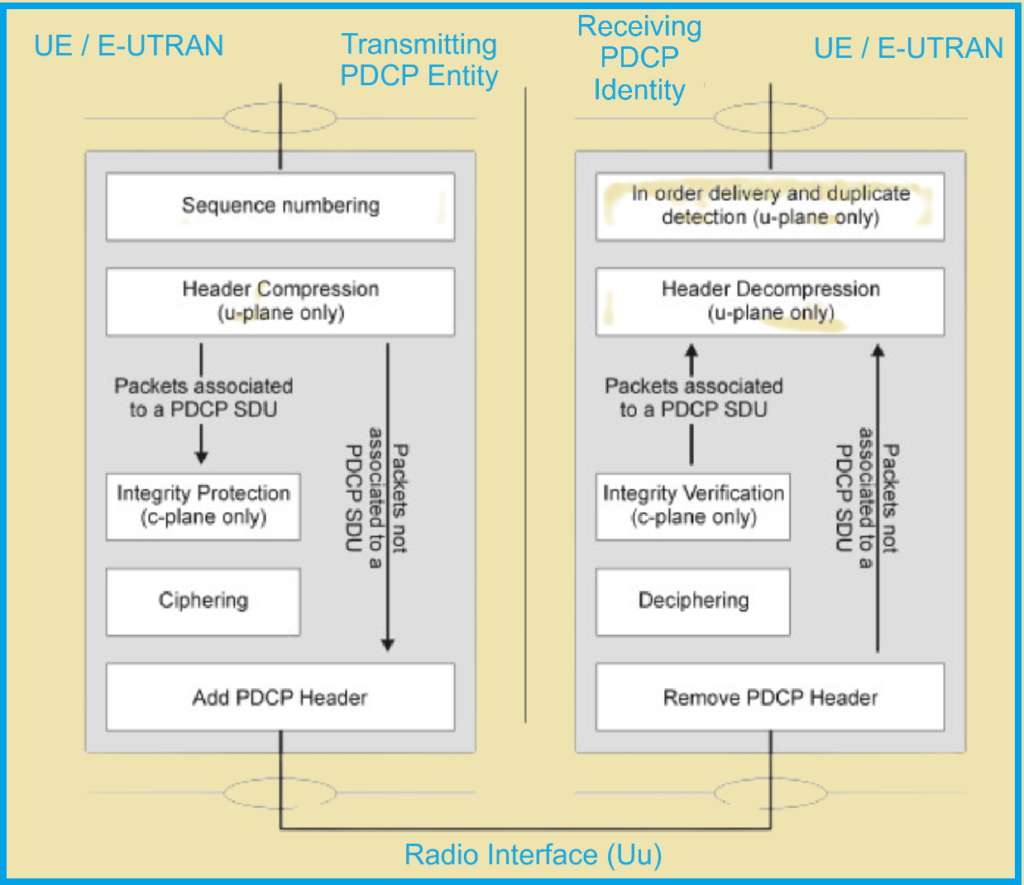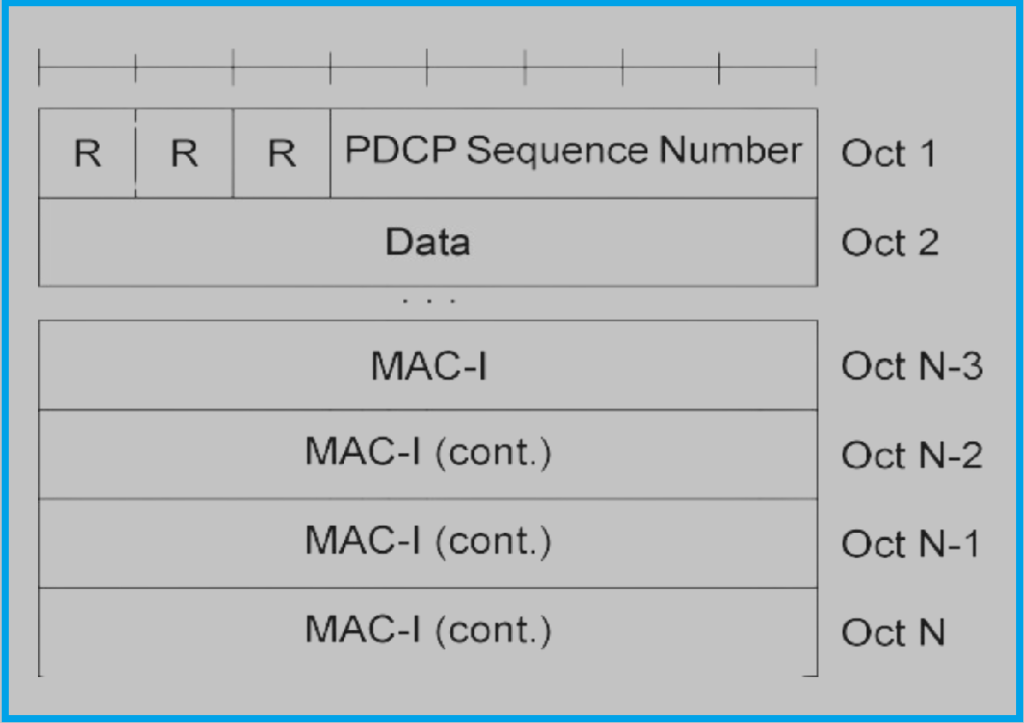PDCP stands for Packet Data Convergence Protocol (PDCP).
The PDCP layer, positioned above the RLC (Radio Link Control) layer, facilitates the transport of control plane messages (RRC and NAS) and user plane packets. In LTE, all data communication is IP-based, meaning voice or video services are delivered as IP packets (e.g., VoIP).
Read Also: What is PDCP in 5G NR?
Packet Data Convergence Protocol (PDCP).
Radio bearers above the PDCP layer map to TM (Transparent Mode), UM (Unacknowledged Mode), or AM (Acknowledged Mode) SAPs of the underlying RLC layer. The PDCP layer ensures in-sequence delivery of SDUs (Service Data Units) for both user and control planes, even when lower layers deliver packets out of order. Sequence numbers, with lengths of 5, 7, or 12 bits, are used for this purpose: 5-bit sequence numbers for Signaling Radio Bearers (SRBs) carrying control plane SDUs, and 7-bit and 12-bit numbers for Dedicated Radio Bearers (DRBs) handling user plane SDUs with application layer IP data.

Header compression is another critical function in the PDCP layer, specifically for user plane transmissions, to minimize application header overhead and boost efficiency. This is particularly important for small packets, such as those used in VoIP, which include IP, UDP, and RTP headers. LTE employs the Robust Header Compression (RoHC) algorithm, defined by the Internet Engineering Task Force (IETF), to compress these headers. Multiple RFCs outline the RoHC profiles and protocols permissible for use in LTE, with ten defined RoHC profiles listed in Table below.

The Packet Data Convergence Protocol (PDCP) also ensures integrity protection for the control plane, specifically for Signaling Radio Bearers (SRBs). This protection involves both ciphering and deciphering functionalities.
For SRB control plane information, the PDCP Data PDU format includes the data field with higher layer protocol information, a PDCP sequence number, some reserved spare bits, and a four-octet integrity protection message authentication code (MAC-I).

In the user plane, two PDCP PDU formats are defined. One format uses a long 12-bit PDCP sequence number, and the other uses a short 7-bit sequence number. The long sequence number format is employed for transporting RLC Acknowledged Mode (AM) and Unacknowledged Mode (UM) information, while the short sequence number format is used for transporting RLC Transparent Mode (TM) frames. The sequence number length for SRB frames is set to 5 bits.

Additionally, the D/C field within the PDCP PDU distinguishes between user plane data (D) and control plane data (C). This differentiation is crucial for ensuring the proper handling and processing of data within the PDCP layer.
Main functions of PDCP Layer.
Functions for User Plane:
- Header compression and decompression: ROHC.
- Transfer of user data: PDCP receives PDCP SDU from the NAS and forwards it to the RLC layer and vice versa.
- In-sequence delivery of upper layer PDUs at handover for RLC AM.
- Duplicate detection of lower layer SDUs at handover for RLC AM.
- Retransmission of PDCP SDUs at handover for RLC AM.
- Ciphering.
- Timer-based SDU discard in uplink.

Functions for Control Plane:
- n Ciphering and Integrity Protection.
- Transfer of control plane data: PDCP receives PDCP SDUs from RRC and forwards it to the RLC layer and vice versa.
PDCP PDU Structure.
PDCP PDU and PDCP header are octet aligned. PDCP header can be either 1 or 2 bytes long.
